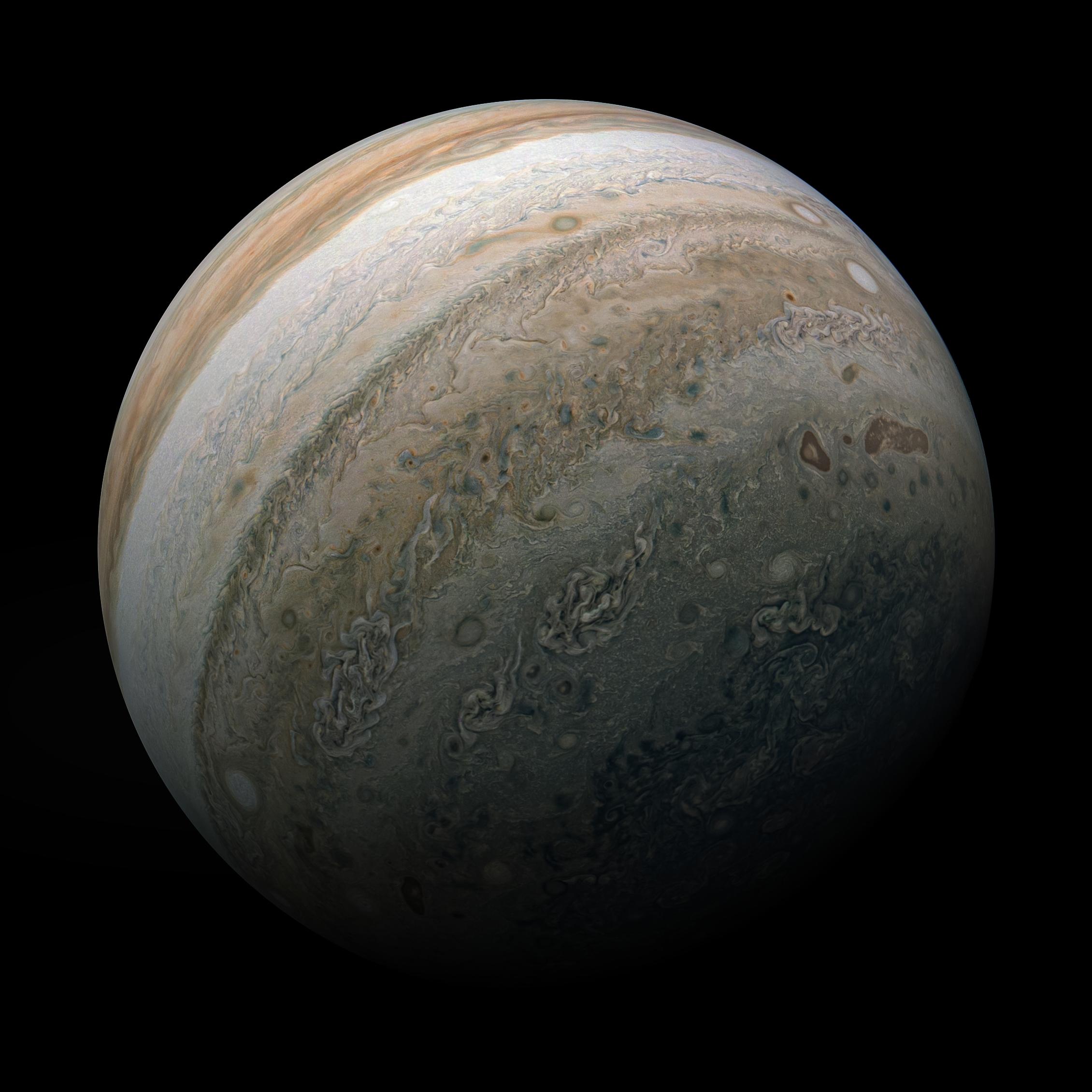
|
Massive Beauty
- Click the image above for a larger view
- Full-Res JPEG (2260 x 2260) (335.1 kB)
- Full-Res TIFF (2260 x 2260) (7.1 MB)
Caption:
NASA's Juno mission captured this look at the southern hemisphere of Jupiter on Feb. 17, 2020, during the spacecraft's most recent close approach to the giant planet.
Not only is Jupiter the largest planet orbiting the Sun, it contains more than twice the amount of material of all other objects in the solar system combined — including all the planets, moons, asteroids and comets. In composition, Jupiter resembles a star, and scientists estimate that if it had been at least 80 times more massive at its formation, it could have become a type of star called a red dwarf rather than a planet.
While the universe's most common elements, hyrdrogen and helium, make up most of Jupiter's mass, the striking clouds that are visible at the top of its atmosphere are composed mostly of ammonia and hydrogen sulfide.
This high-resoltuion view is a composite of four images captured by the JunoCam imager and assembled by citizen scientist Kevin M. Gill. The images were taken on Feb. 17, 2020, between 10:31 a.m. and 11:00 a.m. PST (1:31 p.m. and 2:00 p.m. EST). During that time, the spacecraft was between about 30,700 and 62,400 miles (49,500 and 100,400 kilometers) from the tops of the planet's clouds, at latitudes between about 50 and 68 degrees South.
Background Info:
JunoCam's raw images are available for the public to peruse and process into image products at
https://missionjuno.swri.edu/junocam/processing
.
More information about Juno is at http://www.nasa.gov/juno and http://missionjuno.swri.edu .
Cataloging Keywords:
| Name | Value | Additional Values |
|---|---|---|
| Target | Jupiter | |
| System | Jupiter | |
| Target Type | Planet | |
| Mission | Juno | |
| Instrument Host | Juno | |
| Host Type | Orbiter | |
| Instrument | JunoCam | |
| Detector | ||
| Extra Keywords | Ammonia, Atmosphere, Color, Visual | |
| Acquisition Date | ||
| Release Date | 2020-03-16 | |
| Date in Caption | 2020-02-17 | |
| Image Credit | Image data: NASA/JPL-Caltech/SwRI/MSSS Image processing by Kevin M. Gill, © CC BY | |
| Source | photojournal.jpl.nasa.gov/catalog/PIA23801 | |
| Identifier | PIA23801 | |
